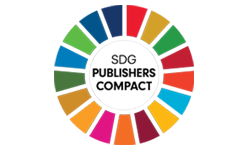Green Computing is the concept to improve environmental conditions. Green Computing has begun to spread in the past few years, gaining increasingly popularity. It includes manufacturing, designing and efficiently using computers and associated subsystems- such as LED,RAM, Processor, Mouse and Keyboard with minimum impact on the environment. We are doing the study and practice of developing Information Technology resources in an environment friendly manner such that our environment get protected. As we all know usage of electronic devices is very popular these days, of which Laptops and Tabs are the most common. Surveys were conducted to analyze power consumption, pattern of devices, components like RAM, Rom processors and LED displays. Furthermore recommendations were made to make them more energy efficient. To promote the idea of green computing, energy star rating were introduced for electronic devices. The more is the star rating, the less is the power consumption. This type of computing can facilitate us to safe and make healthy environment all over the world. Present study will help us to take some initiatives to save vast amount of power which is wasted on very large scale currently under the field of computers/ electronics industry.
URL Reference Power methodology guide, http://www.xilinx.com accessed on 4/8/2016 at 10:30 am
https://e.wikipedia,org/wiki/Green_computing accessed on 04/07/2016 at 10:15 am
http://www.energyrating.gov.au/ accessed on 5/9/2016
http://www.energyrating.gov.au/ accessed on 4/9/2015 at 3:00 pm
http:// www.slideshare.in accessed on 9/10/2016 at 1 PM
http://www.ntpc.co.in/ accessed on 4/2/2016 at 10:00 AM
https:em.wikipedia.org/wiki/field programmable_gate_array accessed on29/04/2016
http://www.ijarcsse.com/docs/papers/Volume_3/7_July2013/V317=0466.pdf on 25/12/2016 at 10:50 pm
https://en.wikipedia.org/wiki/high_speed_transceiver_logic accessed on 4/7/2016 at 10:00 Am
http://www.epa.gov/cleanenergy/energy-resources/calculator.htm#resultsaccessed on 9/09/2016 at 10:30 pm
http://download.cnet.com/Microsoft-Joulemeter/3001-2086_75578519.html?hlndr=1 accessed on 14/;10/2015 at 7:00 pm
Book References
Book. Xilinx Dat “Xilinc” Inc, San Jose, CA(1998) accessed on 17/06/2016 at 10:30 am Virtex-6 Select IO Resources User Guide UG361 (v1.5) March 21,2014 & Virtex-5 Select IO Resource User Guide UG 190, May 12,2006, www.Xilinx.com accessed on 14/07/2016 at 11:00 AM
Conference References
Wang David “Meeting green Computing challenges”. Electronics Packaging Technology Conference, 2008. EPTC 2008. 10th. IEEE, 2008 accessed on 4/5/2015 at 09:00 pm.
Verma Gaurav, et al. “Thermal and power-aware Internet of Things enable RAM design on FPGA.” Computing for sustainable Global Development (INDIACCom), 2015 2nd International Conference on IEEE, 2015 accessed on 14/06/2016 at 07:00 pm.
[18] Balfour James, et al. “An energy-efficient processor architecture for embedded systems.”
Journal of Technology Management for Growing Economies, Volume 7, Number 2, October 2016
Computer Architecture Letters 7.1 (2008): 29-32 accessed on 10/11/2015 at 10 pm.
Renovell Michel, Joan Figueras and Yervant Zorian. “Test of RAM-based FPGA: methodology and application to the interconnect.” VLSI Test Symposium,1997, 15th IEEE. IEEE, 1997 accessed on 4/5/2016 at 10:00 AM.
Tessier Russsell, et al. “Power-Efficient RAM mapping algorithms for FPGA embedded memory blocks”. Computer-Aided Design of Integrated Circuits and Systems, IEEE Transactions on 26.2 (2007): 278-290 accessed on 20/11/2015 at 10:00 AM.
Harmon Robert, et al. “From green computing to sustainable IT: Developing a sustainable service orientation.” System Sciences (HICSS), 2010 43rd Hawaii International Conference on IEEE, 2010 accessed on 12/10/2015 at 10:00 AM.
ZhangXiaodan, Lin Gong and Jun Li. “Research on green computing evaluation system and method.” Industrial Electronics and Application (ICIEA), 2012 7th IEEE Conference on IEEE 2012 accessed on6/6/2015 at 10:00 AM.
Jain Abhishek et al.” Energy Efficient cloud computing. “Energy-Efficient Technologies for Sustainability (ICEETS), 2013 International Conference on IEEE,2013 accessed on 6/6/2016 at 10:00 AM
Roy Sandip and Swastik Gupta. “The green cloud effective framework: An environment-friendly approach reducing CO2 Level.” Non-Conventional Energy (ICONCE), 2014 1st International Conference on. IEEE 2014 accessed on 5/7/2016 at 10:00 AM.
Murugesan San. “Harnessing green IT: Principles and practice.” IT professional 10.1(2008): 24-33 accessed on5.9.2016 at 10:00 pm.
Journal References
Chakraborty Parichay, et al.” Green computing practice of efficient and eco-friendly computing resources.” International Journal of Grid and Distributed Computing 2.3 (2009) accessed on 6/7/2016 at 5:00 PM.
Mahesri Aqeel and Vibhore Vardhan. ”Power consumption breakdown on a modern Laptop.” Power-aware computer systems. Springer Berlin Heidelberg, 2005. 165-180 accessed on 5/7/2016 at 6:00 PM.
Berl Andreas, et al. “Energy-efficient cloud computing. “The computer journal 53.7 (2010):1045-1051 accessed on 05/10/2015 at 10:00 PM.


